Geography at Old Sarum Primary
Intent – vision
We aim to inspire pupils to become curious and explorative thinkers with a diverse knowledge of the world; in other words, to think like a geographer. We want pupils to develop the confidence to question and observe places, measure and record necessary data in various ways, and analyse and present their findings. We aim to build an awareness of how Geography shapes our lives at multiple scales and over time. We hope to encourage pupils to become resourceful, active citizens who will have the skills to contribute to and improve the world around them.
Our Curriculum encourages a strong focus on developing both geographical skills and knowledge alongside critical thinking, with the ability to ask perceptive questions and explain and analyse evidence. The development of fieldwork skills across each year group and a deep interest and knowledge of pupils’ locality and how it differs from other areas of the world. It also encourages a growing understanding of geographical concepts, terms and vocabulary and key concepts:
- Locational knowledge
- Place knowledge
- Human and physical geography
- Geographical skills and fieldwork
Implementation – how we teach
Each unit comprises elements of geographical skill and fieldwork skills which are practised as often as possible. Units follow an enquiry cycle that maps out the fieldwork process of question, observe, measure, record, and present and these are designed to be open-ended. Lessons incorporate various teaching strategies from independent tasks to paired and group work, including practical hands-on, computer-based and collaborative tasks. This variety means that lessons are engaging and appeal to those with a variety of learning styles. Adaptive teaching is used to ensure that all pupils can access learning. Opportunities to stretch pupils’ learning are also planned. Knowledge organisers for each unit support pupils in building a foundation of factual knowledge by encouraging recall of key facts and vocabulary.
Impact – what this means for children
All pupils will be able to:
- Compare and contrast human and physical features to describe and understand similarities and differences between various places in the UK, Europe and the Americas.
- Name, locate and understand where and why the physical elements of our world are located and how they interact, including processes over time relating to climate, biomes, natural disaters and the water cycle.
- Understand how humans use the land for economic and trading purposes, including how the
distribution of natural resources has shaped this.
- Develop an appreciation for how humans are impacted by and have evolved around the physical geography surrounding them and how humans have had an impact on the environment, both positive and negative.
- Develop a sense of location and place around the UK and some areas of the wider world using the eight-points of a compass, four and six-figure grid references, symbols and keys on maps, globes, atlases, aerial photographs and digital mapping.
- Identify and understand how various elements of our globe create positioning, including latitude, longitude, the hemispheres, the tropics and how time zones work, including night and day.
- Present and answer their own geographical enquiries using planned and specifically chosen methodologies, collected data and digital technologies
Impact is constantly monitored using both formative and summative assessment. An enquiry-based approach to learning allows teachers to assess children against the National curriculum expectations for Geography. Furthermore, each unit has a unit quiz and knowledge catcher, which can be used at the start or end of the unit to assess children’s understanding. Opportunities for children to present their findings using their geographical skills will also form part of the assessment process in each unit.
For more information, please follow the link below to our Medium Term Plan
